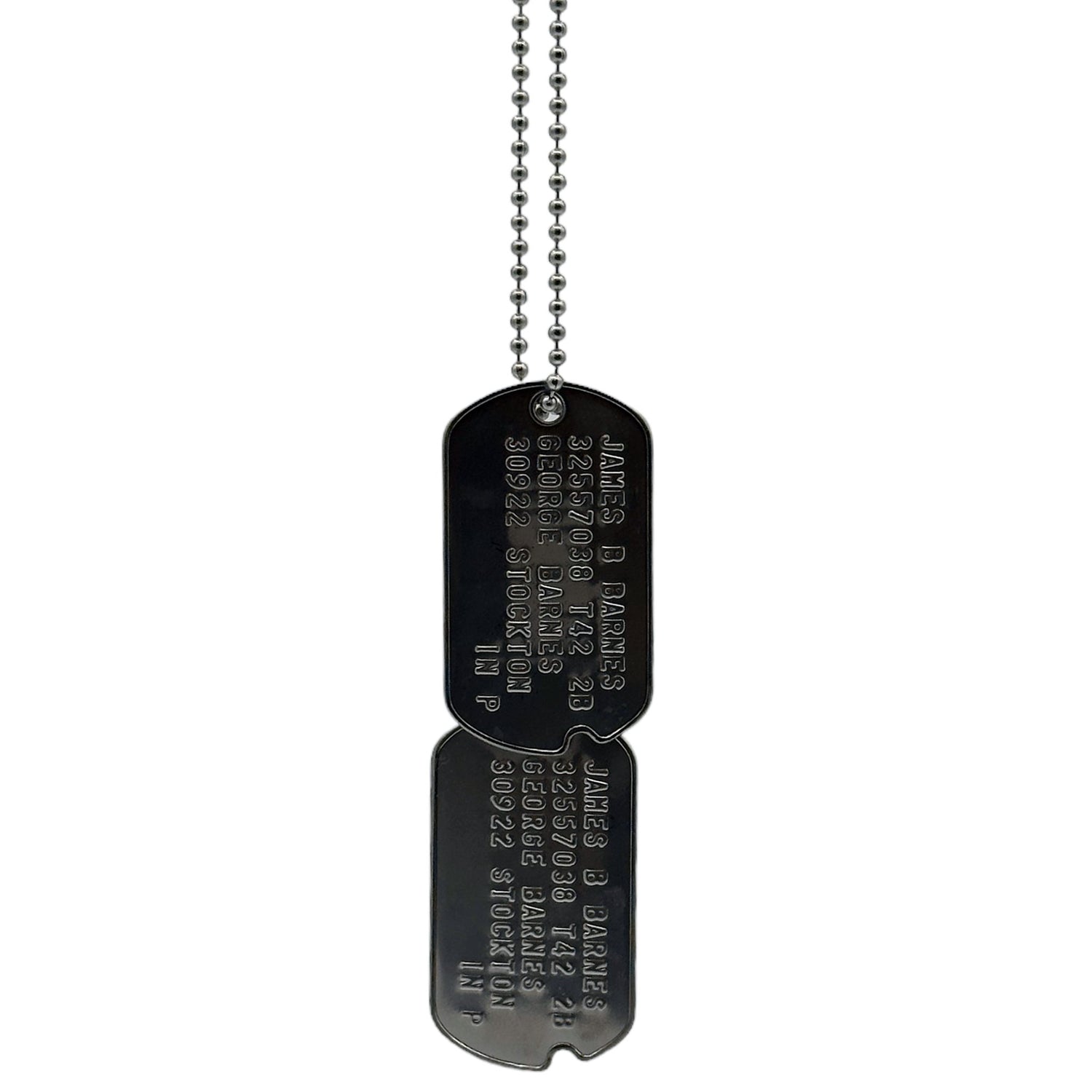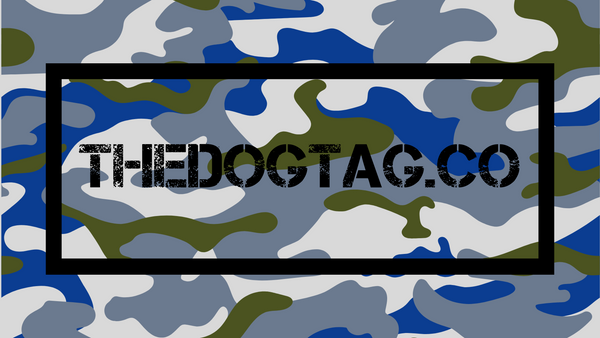Introduction

In the heart of military tradition lies the unassuming yet vital artifact: the dog tag. Serving as a silent witness to history, these small pieces of metal carry the weight of a soldier's identity, both in life and in death. This blog delves into the intriguing world of military dog tags, comparing their design, usage, and significance across various nations. Join us on a global journey to uncover the stories and evolution behind these emblematic identifiers of military personnel.
Exploring the Origins
Dog tags, known as "Erkennungsmarken" in German, have a poignant and practical place in military history. During World War I, the high casualty rates necessitated a reliable method for identifying soldiers. The German military issued these identification tags, which were typically made of durable metals to withstand the harsh conditions of battle. Each soldier's tag would carry critical information, such as their name, rank, unit, and a unique service number, allowing for the identification of the fallen or wounded. This particular tag, from the design and the language used, appears to be from a German soldier of the Great War. The specific details etched onto the surface would have provided a link back to the soldier’s identity, ensuring that if they were to fall in battle, their name would not be lost to the fog of war. These tags were an essential aspect of the organizational systems within the military forces and hold a significant historical value, representing the individuals who served and the gravity of the conflict.

Military dog tags, also known as identification tags, have been an integral part of military uniforms for over a century. Their primary purpose is to provide critical information about soldiers in the event of casualties. The concept originated to address the grim reality of war: the need for efficient identification of fallen soldiers. From the Civil War's simple wooden tags to today's advanced metal alloys, dog tags have evolved significantly, mirroring changes in military technology and strategy.
Design and Information: A Global Perspective
British WWII Royal Air Force (RAF) dog tags served as a vital piece of identification for service members during the conflict. Made from a fibrous material that was non-reflective and noiseless, these lightweight tags bore the essential details of the airmen: their service number, rank, initials, surname, and religious denomination. This information was crucial for the identification of personnel in the event of casualty or capture. The design was pragmatic, ensuring that the details remained legible under the tough conditions of war. These tags not only played a crucial role during service but have since become enduring symbols of the bravery and sacrifice of RAF personnel throughout the Second World War.

Each country's military dog tags reflect its unique history and operational requirements. For instance, the U.S. dog tags typically include the individual's name, Social Security number, blood type, and religious preference. In contrast, the British tags might display the service number, surname, initials, and sometimes the blood type and religion, but not the Social Security number.
Material and Form: Diversity in Unity
Australian military dog tags are recognizable for their rubber silencers, which quieted the clinking and prevented wear. Carrying vital information such as service number and blood type, these tags were a soldier’s silent sentinel, keeping their identity secure during the heat of battle. The rubber-edged tags symbolize both the practicality and humanity of military service.

The materials and shapes of dog tags also vary globally. While the U.S. favors a robust stainless steel, other countries like Russia have experimented with aluminum, and some even with plastic, to meet their specific needs. The shape is predominantly oval in the U.S., but other countries have adopted circular, rectangular, or even unique shapes to distinguish their military personnel.
Technological Advancements and Future Trends
The Danish military dog tag is distinctive due to its unique shape, often described as resembling a bottle opener. This unconventional design serves a dual purpose: identification and utility. Each tag carries engraved details like the service member’s personal identification number and branch of service. The peculiar shape is not merely aesthetic; it is intended to be functional, allowing soldiers to use it as a tool in the field. The Danish dog tag thus embodies the military's ingenuity, combining practicality with the essential task of identifying personnel.

With the advent of technology, modern dog tags have begun to incorporate electronic data, such as microchips and QR codes, to store more detailed information and medical records. This evolution signifies a shift towards integrating digital technology in military operations, enhancing the functionality and utility of dog tags in contemporary warfare.
Frequently Asked Questions
1. What are military dog tags, and why are they important? Military dog tags are small, wearable identification tags issued to soldiers that provide essential information like name, blood type, and service number. They are crucial for identification purposes in case of injury or death in combat, ensuring that soldiers receive proper medical attention and are correctly identified.
2. How do American military dog tags differ from those used in other countries? American military dog tags typically contain the service member's name, Social Security number, blood type, and religious preference. In contrast, other countries might include different details; for example, British dog tags often display the service number, surname, and initials, and may include regiment and religion, reflecting different organizational and cultural priorities.
3. Are there any unique designs or materials used in military dog tags around the world? Yes, designs and materials for dog tags vary widely. For instance, the U.S. uses primarily stainless steel tags, while some nations like Russia have used aluminum or even plastic tags. The shape and size also differ; the U.S. tags are typically oval, whereas some European countries use circular or rectangular tags.
4. How have military dog tags evolved over time in different countries? Military dog tags have evolved from simple hand-stamped pieces to more sophisticated items with laser-engraved details. Historically, dog tags served mainly for identification, but now they often include medical information, barcodes, and even electronic data chips in some countries, adapting to modern warfare and technology needs.
5. Can civilians purchase authentic military dog tags from different countries? Civilians can usually purchase replica military dog tags, but authentic ones are typically restricted to military personnel due to security and privacy concerns. However, surplus or decommissioned tags may be available for collectors, with the specifics depending on the country's policies.
Conclusion
Military dog tags serve as a bridge between the past and present, offering insight into the evolving dynamics of military identification and personal record-keeping. They encapsulate the history, technology, and cultural values of the armed forces around the globe. As symbols of honor, sacrifice, and identity, these tags continue to be an essential element of military heritage, connecting generations of soldiers across the world.


